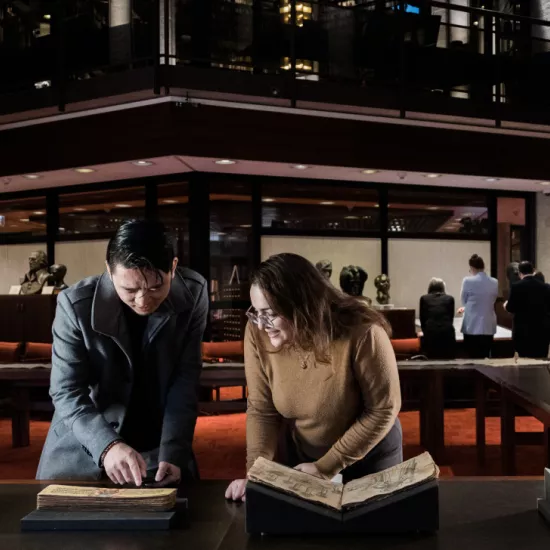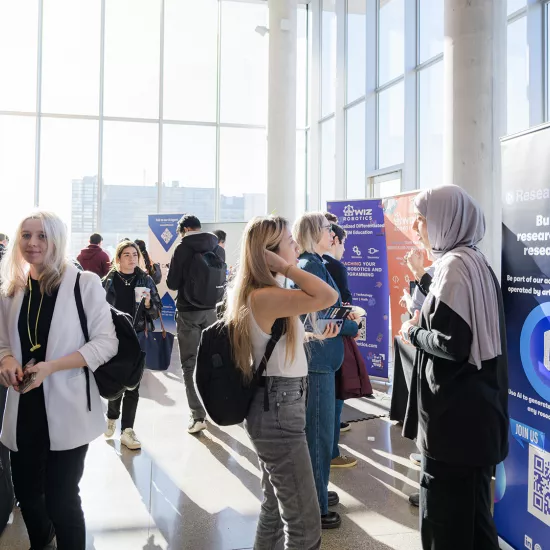UTM psychologist studies the ways people view the world

When Anna Kosovicheva was an undergraduate student at the University of California Berkley, she took a psychology class for the first time.
Intro to Psychology wasn’t her first choice, however, because she thought psychology was just about mental health — a subject that she wasn’t very interested in.
It turns out, the class had a much different focus: it was about how the brain takes in sensory information, such as vision, and how people think about and understand that visual input.
She was instantly hooked.
“Imagine for a moment that I were to take away your ability to process any kind of sensory information. You would have no ability to really register what’s going on in your environment. You wouldn’t really have any mental life, essentially,” says Kosovicheva, now an assistant professor of psychology at University of Toronto Mississauga.
Kosovicheva has spent her academic life and career to studying how people see the world differently — literally — and uses this information to help solve real-world problems, such as improving digital readability and developing better methods for assessing visual impairments.
Her hands-on approach led to the development of her third-year Perception Laboratory (PSY389) course, which was first offered at UTM in 2023. In this course, students learn research techniques to better understand the visual system and the brain.

During in-lab exercises, students develop, test, and collect data about themselves and their own visual perception — for example, how bright something looks, and whether they can recognize text and identify letters that are surrounded by clutter. They then use this data to brainstorm how they can apply their findings to help solve real-world problems, such as developing an app to help people with visual impairments read more effectively. Students also learn to use eye tracker technology, which measures where the user is looking on a screen.
“This course is very new and exciting for me, and I’ve really enjoyed putting a lot of work into developing it and teaching students the eye-tracking aspect,” Kosovicheva says, adding that her goal is to help students think about how their results might apply to practical settings.

In her second-year course PSY280: Sensation and Perception: Where the World Meets the Brain, Kosovicheva builds physical props to demonstrate perceptual principles to her students. It helps them learn and appreciate visual perception by looking at physical objects.
Some examples of these props include reverse-perspective illusions (illusions where something curved or rounded outward looks curved or rounded inward) and barrier-grid animations (a 2-D version of a flipbook).
PSY280 is a pre-requisite to her third-year lab course.
“The idea is for students to take that course first, and learn about all these cool visual phenomena and illusions. They can then take that into the perception laboratory course and figure out how they can apply their findings to the real world,” she explains.
As co-director of the Applied Perception and Psychophysics Laboratory (APPLY) at UTM, Kosovicheva also uses computer-based experiments and eye tracker technology to study visual variations between individuals. In the APPLY Lab, she works to understand how the brain determines where objects are, and how it differs among individuals. She also uses psychophysical methods to better understand visual impairments — for example, measuring how well the two eyes can work together — which can ultimately help in developing better assessments for patients who have visual impairments.
Additionally, Kosovicheva’s lab focuses on improving digital readability, and what makes texts easier or harder for someone to read.
“There’s large variation in terms of how efficiently we can extract information from text on screens,” she says. “There’s this idea that that there’s a broad range of fonts that work well for most people, but we can further boost reading performance by customizing text for individual readers.”
While Kosovicheva is determined to solve real-world problems through her research, her work is also a reminder of the complexities of our visual system.
“We kind of take our visual system for granted,” she says. “We open our eyes, and we see, but the brain does a lot of work ‘under the hood’ to understand how it is that we represent information, and understand what’s going on.”




